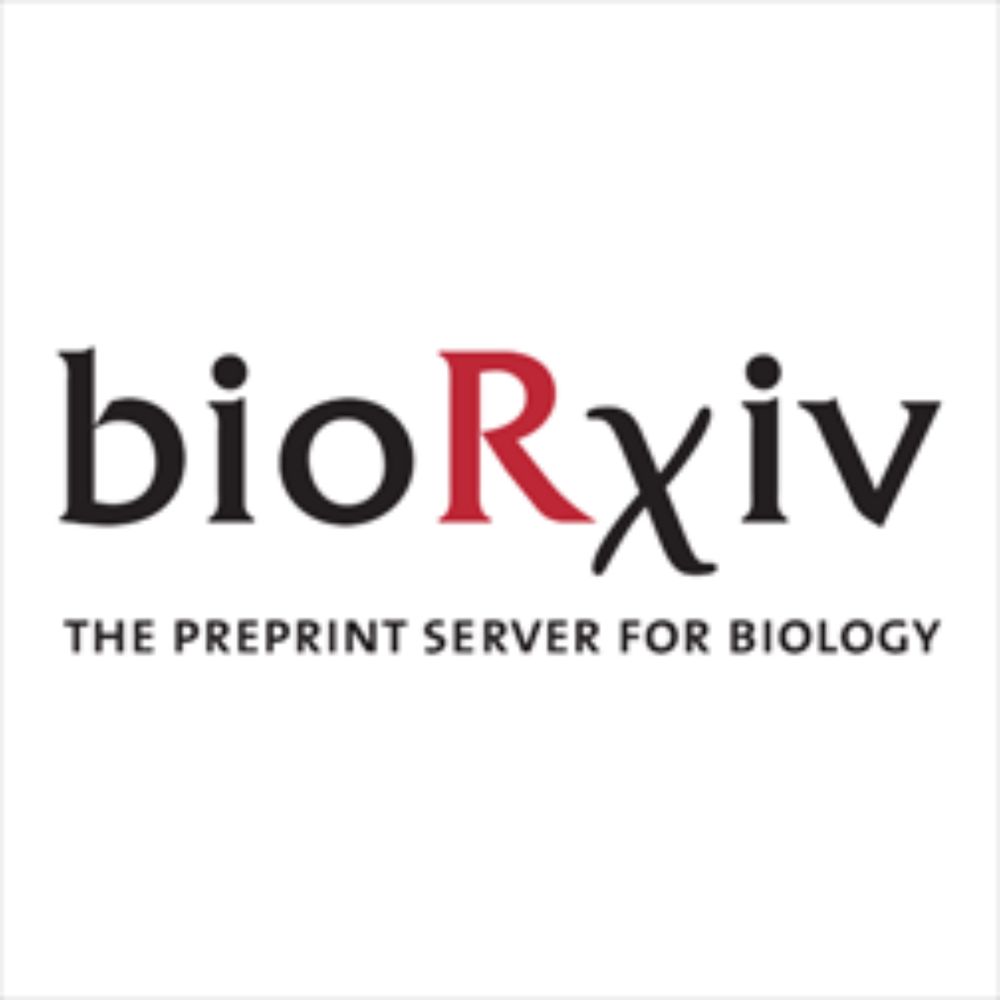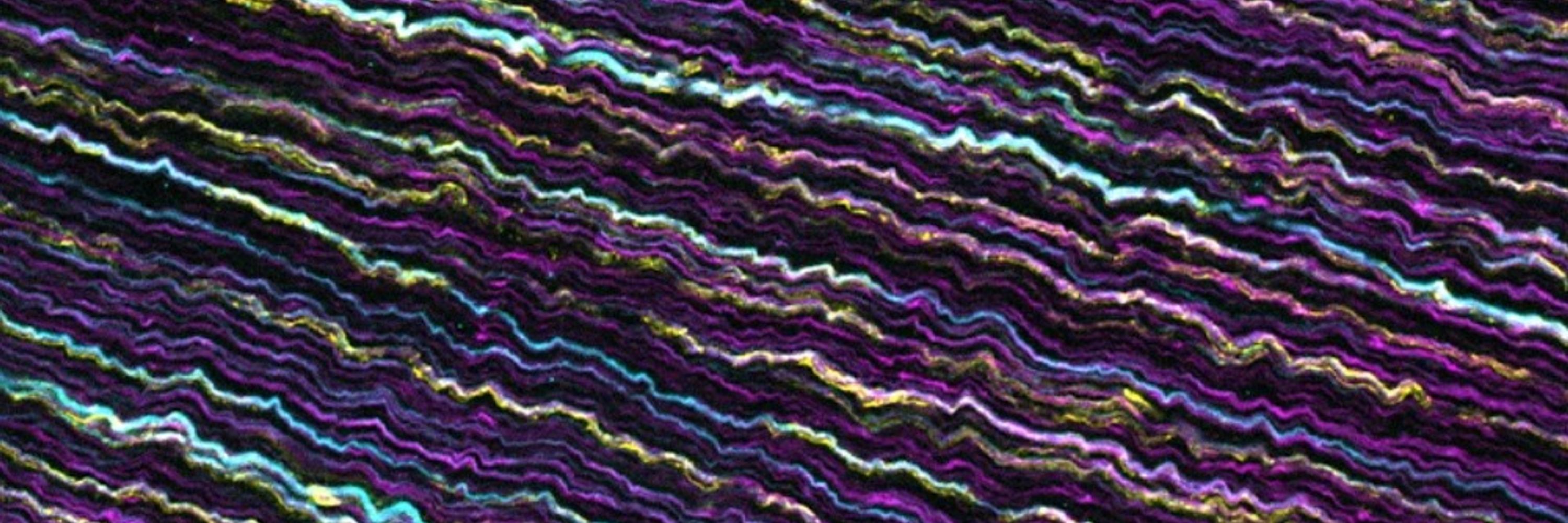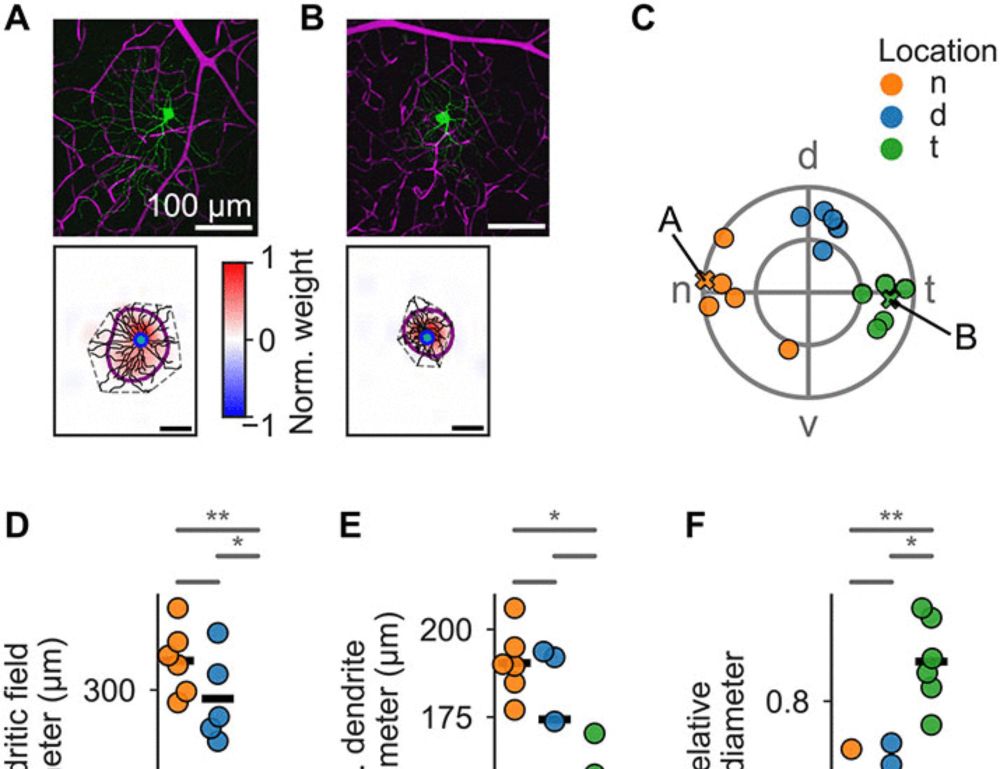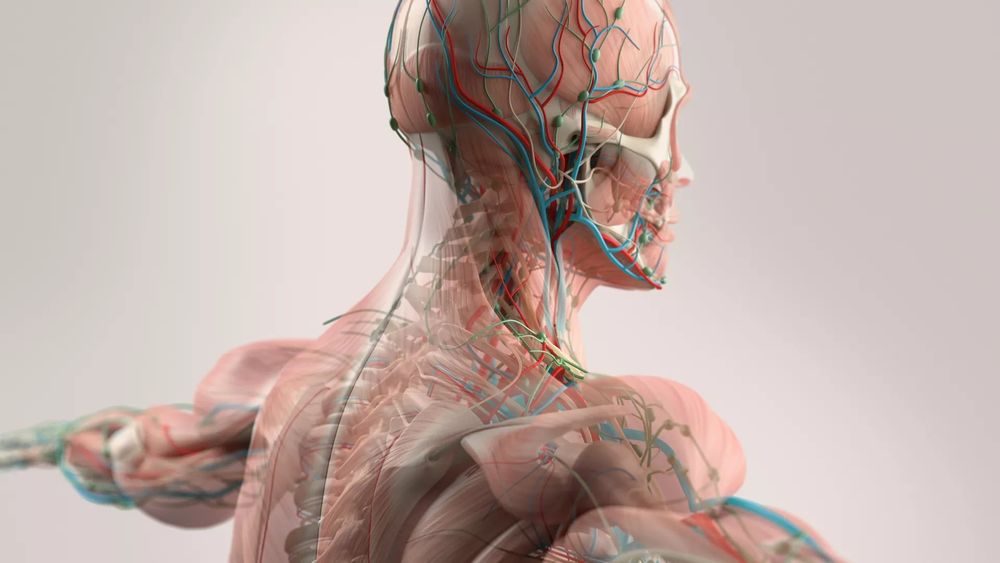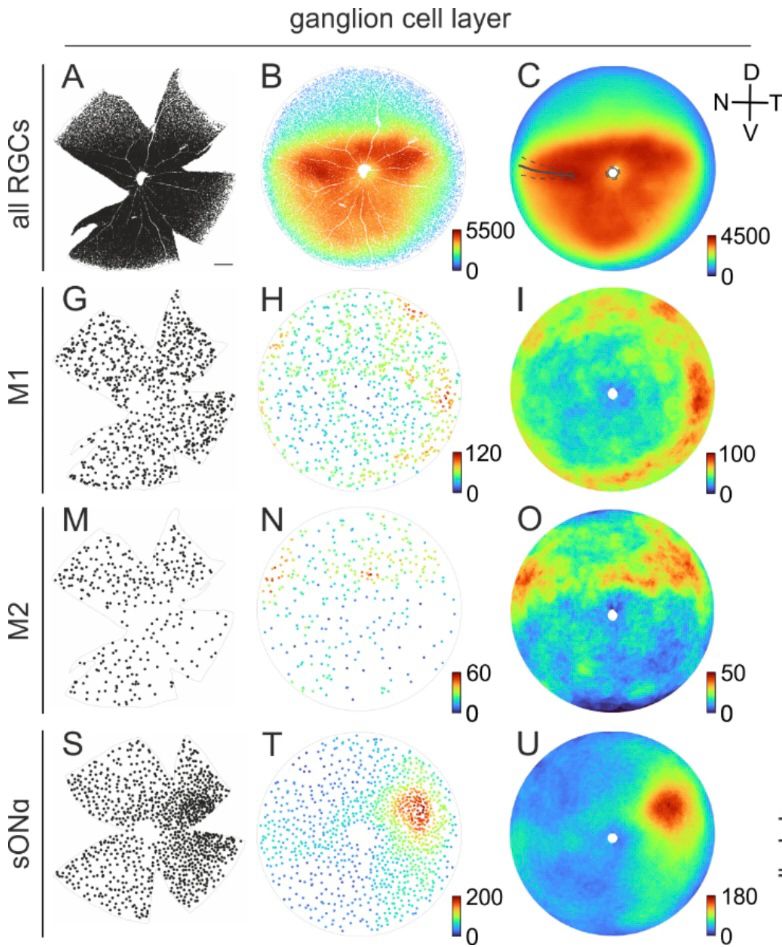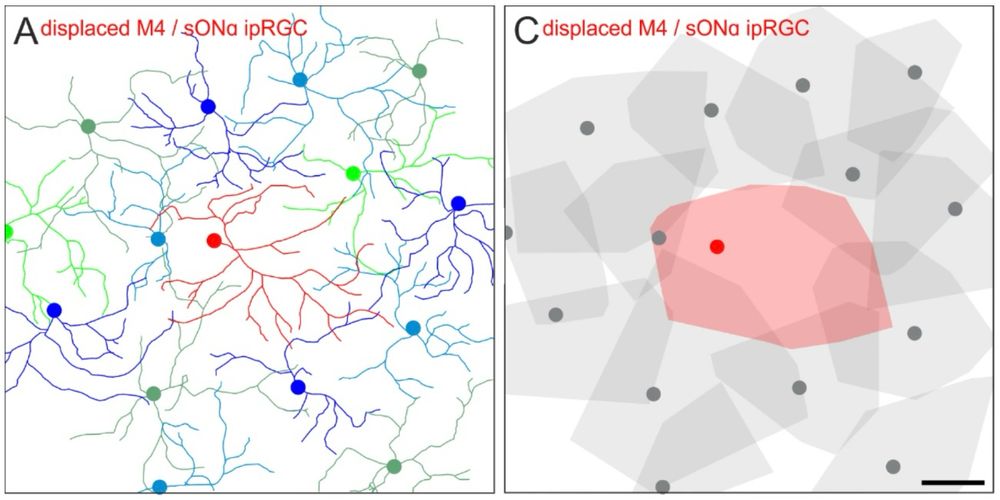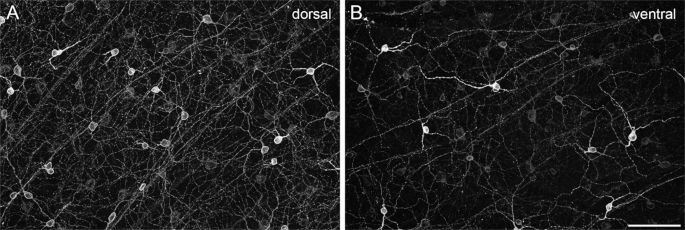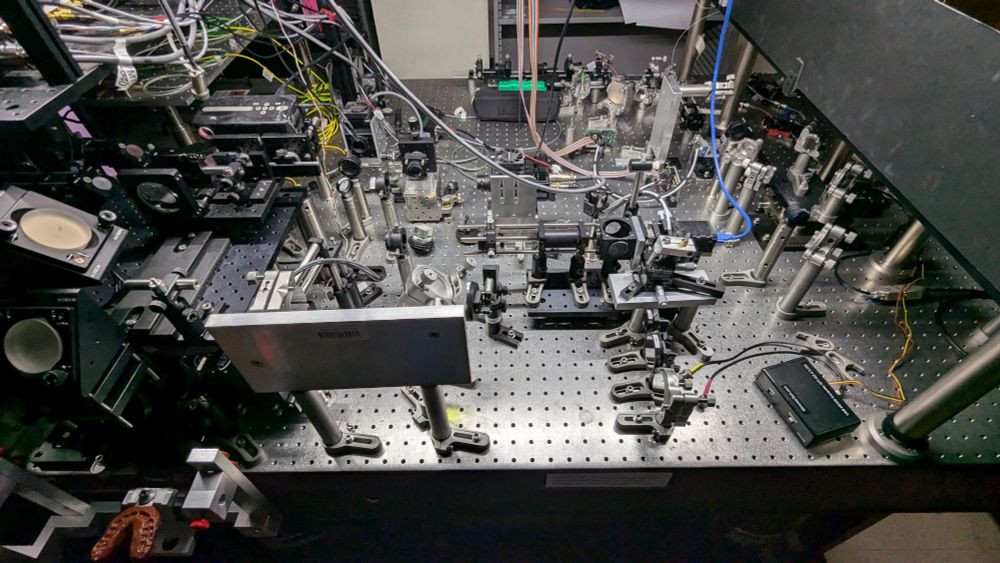Projection Targeting with Phototagging to Study the Structure and Function of Retinal Ganglion Cells
Visual information from the retina is sent to diverse targets throughout the brain by different retinal ganglion cells (RGCs). Much of our knowledge about the different RGC types and how they are routed to these brain targets is based on mice, largely due to the extensive library of genetically modified mouse lines. To alleviate the need for using genetically modified animal models for studying retinal projections, we developed a high-throughput approach called projection targeting with phototagging that combines retrograde viral labeling, optogenetic identification, functional characterization using multi-electrode arrays, and morphological analysis. This method enables the simultaneous investigation of projections, physiology, and structure-function relationships across dozens to hundreds of cells in a single experiment. We validated this method in rats by targeting RGCs projecting to the superior colliculus, revealing multiple functionally defined cell types that align with prior studies in mice. By integrating established techniques into a scalable workflow, this framework enables comparative investigations of visual circuits across species, expanding beyond genetically tractable models. Motivation Visual information from the retina is distributed to diverse targets throughout the brain. Much of our knowledge about how visual information is processed and routed to these brain targets is based on mice because of the large library of genetically modified mouse lines. For most other species, such libraries are not available. Therefore, we were motivated to develop an approach for characterizing diverse retinal projections into the brain that can be applied to other species. We aimed to achieve projection targeting with retrograde viral vectors, followed by identification of circuit-specific retinal ganglion cells (RGCs) with optogenetics, functional characterization with multi-electrode array (MEA) recordings, and morphological description with in situ and confocal microscopy. The resulting high-throughput approach permits functional and morphological investigation of dozens to hundreds of cells in individual experiments. By replacing the need for genetically modified animals with a suite of standard techniques, this approach should improve cross-species comparisons of the initial stages of visual processing. Summary Understanding the structure-function relationships across neurons is challenging, particularly when circuits are composed of dozens of distinct cell types. We refined an approach, called projection targeting with phototagging, that allows simultaneous elucidation of the projections, morphology, and visual response properties of diverse RGC types in the mammalian retina. The approach combines retrograde virally mediated phototagging of RGCs, microscopy, and large-scale MEA measurements. Importantly, the approach does not rely on transgenic animals and thus is generalizable across species. We validated this approach in rats by targeting retinal projections to the superior colliculus (SC). We showed that multiple RGC types project to the SC and that these results in rats align well with prior findings from transgenic mouse studies. ![Figure][1]</img> Highlights ### Competing Interest Statement K.R. Is a coauthor on a patent for AAV2retro (Application No. 62/350,361 filed June 15, 2016, and U.S. Application No. 62/404,585 filed October 5, 2016). * AAV : adeno-associated virus cMRF : central mesencephalic reticular formation CRF : contrast response functions DpG : deep gray layer of the superior colliculus DpWh : deep white layer of the superior colliculus EI : electrical image GCL : ganglion cell layer IC : inferior colliculus INL : inner nuclear layer InG : intermediate gray layer of the superior colliculus IPL : Inner Plexiform Layer InWh : intermediate white layer of the superior colliculus ISI : inter-spike interval distribution MEA : multi-electrode array MGN : medial geniculate nucleus of the thalamus OT : nucleus of the optic tract Op : optic nerve layer of the superior colliculus OSI : orientation-selective index PAG : periaqueductal gray PC : posterior commissure POD : post-operative day PT : pretectum ReaChR : red-shifted channelrhodopsin RF : receptive field RGC : retinal ganglion cell SRF : spatial receptive field SuG : superficial gray layer of the superior colliculus TRF : temporal receptive field Zo : zonal layer of the superior colliculus Duke Institute for Brain Sciences (DIBS) Incubator Award NIH R01 EY034004 K99 EY032119 NIH P30 EY005722 Core Grant for Vision Research at Duke University NIH P30 EY000331 for Vision Research and an Unrestricted Grant from Research to Prevent Blindness at UCLA [1]: pending:yes
